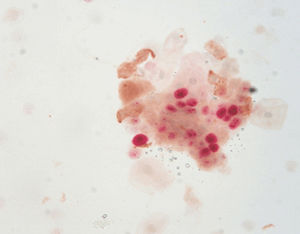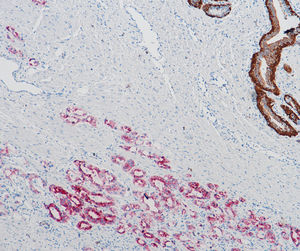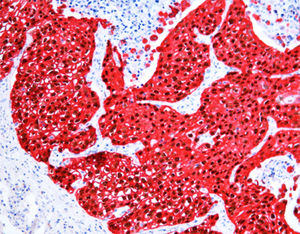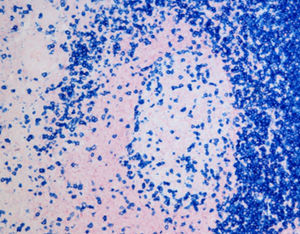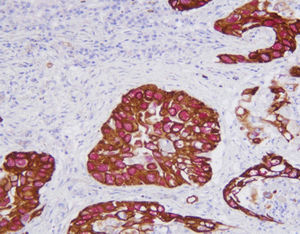
- Laboratory
- Laboratory medicine
- Staining solution reagent
- Celnovte Biotechnology Co., Ltd.

- Company
- Products
- Catalogs
- News & Trends
- Exhibitions
Staining solution reagent kit SD8105tissueimmunohistochemistry
Add to favorites
Compare this product
Characteristics
- Type
- staining solution
- Applications
- tissue, immunohistochemistry
Description
CK5/6/p63 detection reagent (Immunohistochemical) is mainly used to qualitatively identify CK5/6 and p63 proteins. Using immunohistochemical dual staining detection and multiple antibody combination technology, there are detected two antigen targets at the same time on the same sample tissue section by one staining process.
Product Parameters
CK5/6 is a kind of basal cell high molecular weight keratin. It is positive in squamous epithelium and ductal epithelial basal cells and some squamous epithelial germinal cells, myoepithelial cells, mesothelial cells, and glandular epithelial cells. Therefore, it can be used for the differential diagnosis of squamous cell carcinoma, mesothelioma, adenocarcinoma, ductal epithelial benign and malignant hyperplasia. CK5/6 shows strongly positive in most usual ductal hyperplasia (UDH) lesions of the breast, but significantly reduced in most ductal carcinoma in situ (DCIS) and atypical ductal hyperplasia (ADH) of the breast.
CK5/6 is a marker of mesothelioma. TTF-1 is almost not expressed in mesothelioma. Combined detection of the two markers can be used to differentially diagnose mesothelioma and lung adenocarcinoma. The combination of CK5/6 and TTF-1 antibody is used to detect most lung cancers, and only one target is positive. When the two antibodies are expressed together, it may be a sign of adenosquamous carcinoma. CK5/6/TTF-1 can help distinguish lung adenocarcinoma from lung squamous cell carcinoma.
Catalogs
No catalogs are available for this product.
See all of Celnovte Biotechnology Co., Ltd.‘s catalogsOther Celnovte Biotechnology Co., Ltd. products
MULTI-STAINING & DUAL STAINING
Related Searches
- Assay kit
- Solution reagent kit
- Blood assay kit
- Molecular biology reagent kit
- Immunoassay assay kit
- Infectious disease detection kit
- Research reagent kit
- Protein reagent kit
- Diagnostic reagent kit
- Laboratory reagent kit
- Enzyme reagent kit
- Molecular test kit
- Histology reagent kit
- Clinical assay kit
- Reagent medium reagent kit
- Immunology reagent
- Cytology reagent kit
- Dye reagent
- Antibody
- Buffer solution reagent kit
*Prices are pre-tax. They exclude delivery charges and customs duties and do not include additional charges for installation or activation options. Prices are indicative only and may vary by country, with changes to the cost of raw materials and exchange rates.

